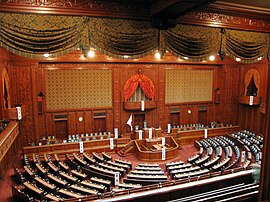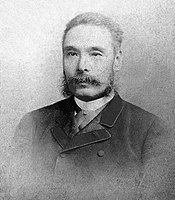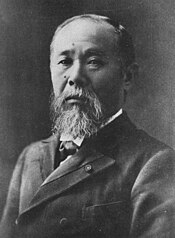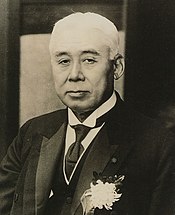What Powers Are Granted to the House of Representatives
Coordinates: 35°40′xxx.6″Northward 139°44′41.viii″E / 35.675167°North 139.744944°E / 35.675167; 139.744944
| Firm of Representatives 衆議院 Shūgiin | |
|---|---|
| The 49th House of Representatives | |
 | |
| Type | |
| Type | Lower House of the National Diet of Japan |
| Leadership | |
| Speaker of the House of Representatives of Japan | Hiroyuki Hosoda, LDP |
| Vice Speaker of the House of Representatives of Japan | Banri Kaieda, CDP |
| Prime Minister | Fumio Kishida, LDP |
| Leader of the Opposition | Kenta Izumi, CDP |
| Structure | |
| Seats | 465 |
 | |
| Political groups | Government (293)
Opposition (172)
|
| Elections | |
| Voting system | Parallel voting: Outset past the post (289 seats) Party-list proportional representation (176 seats) |
| Final election | Oct 31, 2021 |
| Meeting identify | |
 | |
| Chamber of the Business firm of Representatives | |
| Website | |
| www.shugiin.become.jp | |
The Business firm of Representatives ( 衆議院 , Shūgiin ) is the lower house of the National Diet of Japan. The Firm of Councillors is the upper house.
The composition of the Firm is established by Article 41 and Article 42 of the Constitution of Japan.[i] The Firm of Representatives has 465 members, elected for a four-year term. Of these, 176 members are elected from 11 multi-member constituencies by a party-listing system of proportional representation, and 289 are elected from single-fellow member constituencies. 233 seats are required for a majority.
The overall voting organization used to elect the Firm of Representatives is a parallel system, a form of semi-proportional representation. Nether a parallel system the allocation of listing seats does non take into business relationship the effect in the unmarried seat constituencies. Therefore, the overall resource allotment of seats in the House of Representatives is not proportional, to the advantage of larger parties. In contrast, in bodies such equally the German Bundestag or the New Zealand Parliament the election of single-seat members and party list members is linked, so that the overall result respects proportional representation fully or to some degree.[ commendation needed ]
The Firm of Representatives is the more powerful of the two houses, able to override vetoes on bills imposed by the House of Councillors with a two-thirds majority.[2] [3] [4]
The last election for the Business firm of Representatives was held on 31 October 2022 in which the Liberal Democratic Party won a bulk regime with 261 seats. Along with their coalition partner, Komeito, which won 32 seats, the governing coalition holds 293 seats in total.[5]
Right to vote and candidature [edit]
- Japanese nationals aged 18 years and older may vote (prior to 2016, the voting historic period was 20).[6]
- Japanese nationals aged 25 years and older may run for role in the lower house.
Differences between the Upper and Lower Houses [edit]
The Business firm of Representatives has several powers not given to the Firm of Councillors. If a bill is passed by the lower business firm (the House of Representatives) but is voted downwards by the upper firm (the House of Councillors) the Business firm of Representatives can override the decision of the House of Councillors by a ii-thirds vote in the affirmative. Nevertheless, in the case of treaties, the budget, and the selection of the prime government minister, the House of Councillors can just delay passage, but not block the legislation. As a outcome, the House of Representatives is considered the more powerful house.
Members of the House of Representatives, who are elected to a maximum of four years, sit for a shorter term than members of the Business firm of Councillors, who are elected to full six-yr terms. The lower firm can also exist dissolved by the Prime Government minister or the passage of a nonconfidence motility, while the Firm of Councillors cannot exist dissolved. Thus the House of Representatives is considered to exist more sensitive to public opinion, and is termed the "lower house".
While the legislative term is nominally 4 years, early on elections for the lower house are very common, and the median lifespan of postwar legislatures has in exercise been around 3 years.
Current composition [edit]
| In-Firm Groups [innai] kaiha | Parties | Representatives | |
|---|---|---|---|
| Liberal Democratic Party Jiyūminshutō / Mushozoku no Kai Liberal Democratic Political party | LDP | 262 | |
| The Constitutional Democratic Political party of Nihon Rikken Minshutō・Mushozoku Constitutional Democratic Party | CDP, SDP, Independents | 97 | |
| Nihon Ishin (Nippon Innovation Party) Nippon Ishin no Kai・Mushozoku no Kai Nippon Ishin no Kai | Ishin | 41 | |
| Komeito Kōmeitō | Kōmeitō | 32 | |
| Autonomous Party for the People Kokumin Minshutō | DPFP | 11 | |
| Japanese Communist Political party Nihon Kyōsantō | JCP | 10 | |
| Yushi no Kai Yūshi no Kai | Yushi no Kai | five | |
| Reiwa Shinsengumi Reiwa Sinsengumi | Reiwa | 3 | |
| Independents | Independent | 4 | |
| Total | 465 | ||
For a listing of majoritarian members and proportional members from Hokkaidō, encounter the List of members of the Diet of Japan.
Latest ballot result [edit]
 | |||||||||
| Party | Proportional | Constituency | Full seats | +/– | |||||
|---|---|---|---|---|---|---|---|---|---|
| Votes | % | Seats | Votes | % | Seats | ||||
| Liberal Democratic Party | 19,914,883 | 34.66 | 72 | 27,626,235 | 48.08 | 187 | 259 | –25 | |
| Constitutional Democratic Party of Nippon | 11,492,095 | 20.00 | 39 | 17,215,621 | 29.96 | 57 | 96 | New | |
| Nippon Ishin no Kai | eight,050,830 | 14.01 | 25 | 4,802,793 | 8.36 | 16 | 41 | +thirty | |
| Komeito | seven,114,282 | 12.38 | 23 | 872,931 | i.52 | 9 | 32 | +3 | |
| Japanese Communist Party | 4,166,076 | seven.25 | 9 | 2,639,631 | 4.59 | one | 10 | –i | |
| Democratic Party for the People | 2,593,396 | four.51 | 5 | 1,246,812 | 2.17 | vi | 11 | New | |
| Reiwa Shinsengumi | 2,215,648 | 3.86 | three | 248,280 | 0.43 | 0 | 3 | New | |
| Social Autonomous Political party | 1,018,588 | 1.77 | 0 | 313,193 | 0.55 | 1 | 1 | –ane | |
| The Party to Protect the People from NHK | 796,788 | one.39 | 0 | 150,542 | 0.26 | 0 | 0 | New | |
| Shiji Seitō Nashi | 46,142 | 0.08 | 0 | 0 | 0 | ||||
| Japan First Party | 33,661 | 0.06 | 0 | ix,449 | 0.02 | 0 | 0 | New | |
| Yamato Party | sixteen,970 | 0.03 | 0 | 15,091 | 0.03 | 0 | 0 | New | |
| New Party to Strengthen Corona Countermeasures by Modify of Regime | 6,620 | 0.01 | 0 | 0 | New | ||||
| Kunimori Conservative Party | 29,306 | 0.05 | 0 | 0 | New | ||||
| Beloved Earth Political party | five,350 | 0.01 | 0 | 0 | New | ||||
| Party for Japanese Kokoro | 4,552 | 0.01 | 0 | 0 | 0 | ||||
| Reform Future Party | 3,698 | 0.01 | 0 | 0 | New | ||||
| Renewal Political party | ii,750 | 0.00 | 0 | 0 | New | ||||
| Political party for a Successful Japan | 1,630 | 0.00 | 0 | 0 | New | ||||
| Independents | ii,269,168 | 3.95 | 12 | 12 | –10 | ||||
| Total | 57,465,979 | 100.00 | 176 | 57,457,032 | 100.00 | 289 | 465 | 0 | |
| Valid votes | 57,465,979 | 97.58 | 57,457,032 | 97.55 | |||||
| Invalid/bare votes | 1,425,366 | 2.42 | 1,443,227 | ii.45 | |||||
| Total votes | 58,891,345 | 100.00 | 58,900,259 | 100.00 | |||||
| Registered voters/turnout | 105,224,103 | 55.97 | 105,224,103 | 55.98 | |||||
| Source: Ministry building of Internal Affairs and Communications | |||||||||
Election results for major parties since 1958 [edit]
Shaded
- green: Ruling political party/coalition before and after the lower house election
- red: Ruling party/coalition until the ballot = Change of government every bit a effect of the lower firm election
- blue: Ruling party/coalition later on the election = Change of government every bit a result of the lower house ballot
- none: Opposition before and after the ballot
Note that the composition of the ruling coalition may change between lower house elections, eastward.m. after upper house elections. Parties who vote with the government in the Diet, but are not role of the cabinet (e.g. SDP & NPH after the 1996 election) are not shaded.
Parallel electoral arrangement (since 1996) [edit]
| Parties | Segment | 1996[8] | 2000[9] | 2003[10] | 2005[11] | 2009[12] | 2012 | 2014 | 2017 |
|---|---|---|---|---|---|---|---|---|---|
| Total seats | 500 | 480 | 480 | 480 | 480 | 480 | 475 | 465 | |
| Liberal Democratic Political party (LDP) Jiyū Minshutō | FPTP | 38.6% | 41.0% | 43.ix% | 47.8% | 38.6% | 43.0% | 48.one% | 48.21% |
| 169 | 177 | 168 | 219 | 64 | 237 | 223[thirteen] | 226 | ||
| PR | 32.8% | 28.3% | 35.0% | 38.1% | 26.7% | 27.6% | 33.1% | 33.28% | |
| seventy | 56 | 69 | 77 | 55 | 57 | 68 | 66 | ||
| Full seats | 239 | 233 | 237 | 296 | 119 | 294 | 291 | 284 | |
| Constitutional Democratic Party (CDP) Rikken Minshutō | FPTP | – | 8.75% | ||||||
| 18 | |||||||||
| PR | xix.88% | ||||||||
| 37 | |||||||||
| Total seats | 55 | ||||||||
| Party of Hope Kibō no Tō | FPTP | – | 20.64% | ||||||
| 18 | |||||||||
| PR | 17.36% | ||||||||
| 32 | |||||||||
| Total seats | l | ||||||||
| Autonomous Political party of Nihon (DPJ) Minshutō (1996–2014) Democratic Party (DP) Minshintō (2017) | FPTP | 10.6% | 27.6% | 36.7% | 36.4% | 47.4% | 22.8% | 22.5% | no party nominations, ≈14 members elected |
| 17 | eighty | 105 | 52 | 221 | 27 | 38 | |||
| PR | 16.one% | 25.2% | 37.4% | 31.0% | 42.4% | 15.9% | eighteen.three% | ||
| 35 | 47 | 72 | 61 | 87 | thirty | 35 | |||
| Total seats | 52 | 127 | 177 | 113 | 308 | 57 | 73 | ||
| Japan Restoration Party (JRP) Nihon Ishin no Kai (2012) Japan Innovation Party (JIP) Ishin no Tō (2014) | FPTP | – | eleven.half-dozen% | 8.ii% | iii.eighteen% | ||||
| 14 | 11 | 3 | |||||||
| PR | 20.three% | 15.7% | 6.07% | ||||||
| 40 | 30 | eight | |||||||
| Total seats | 54 | 41 | xi | ||||||
| (New) Komeito (One thousand/NK/NKP/CGP/NCGP/etc.) Kōmeitō | FPTP | – | ii.0% | 1.5% | 1.four% | 1.ane% | 1.4% | 1.5% | 1.5% |
| 7 | 9 | 8 | 0 | ix | 9 | viii | |||
| PR | 13.0% | 14.8% | xiii.3% | 11.iv% | 11.8% | 13.seven% | 12.51% | ||
| 24 | 25 | 23 | 21 | 22 | 26 | 21 | |||
| Full seats | 31 | 34 | 31 | 21 | 31 | 35 | 29 | ||
| Japanese Communist Party (JCP) Nihon Kyōsantō | FPTP | 12.vi% | 12.1% | 8.1% | 7.ii% | 4.two% | 7.8% | 13.three% | nine.02% |
| 2 | 0 | 0 | 0 | 0 | 0 | ane | 1 | ||
| PR | 13.i% | xi.2% | 7.8% | 7.2% | 7.0% | six.one% | eleven.iv% | 7.nine% | |
| 24 | xx | 9 | 9 | 9 | 8 | xx | xi | ||
| Total seats | 26 | 20 | nine | ix | nine | 8 | 21 | 12 | |
| Social Democratic Party (SDP) Shakai Minshutō | FPTP | 2.2% | 3.8% | ii.nine% | 1.5% | one.9% | 0.vii% | 0.8% | 1.15% |
| 4 | 4 | 1 | 1 | 3 | 1 | 1 | 1 | ||
| PR | 6.4% | ix.iv% | v.1% | 5.5% | 4.2% | two.iii% | 2.5% | i.69% | |
| 11 | fifteen | 5 | 6 | 4 | 1 | 1 | ane | ||
| Total seats | 15 | 19 | 6 | 7 | 7 | 2 | 2 | two | |
| New Borderland Party (NFP) Shinshintō (1996) Liberal Party Jiyūtō (2000) Tomorrow Political party of Nihon (TPJ) Nippon Mirai no Tō (2012) People'southward Life Party (PLP) Seikatsu no Tō (2014) Liberal Party (LP) Jiyūtō (2017) | FPTP | 28.0% | 3.4% | – | 5.0% | ane.0% | no party nominations, ii members elected | ||
| 96 | 4 | 2 | 2 | ||||||
| PR | 28.0% | eleven.0% | 5.7% | one.9% | |||||
| 60 | xviii | 7 | 0 | ||||||
| Total seats | 156 | 22 | nine | ii | |||||
| Your Political party (YP) Minna no Tō | FPTP | – | 0.eight% | 4.7% | – | ||||
| 2 | iv | ||||||||
| PR | 4.two% | 8.seven% | |||||||
| three | 14 | ||||||||
| Total seats | 5 | 19 | |||||||
| Conservative Party Hoshutō (2000) New Bourgeois Party Hoshu Shintō (2003) | FPTP | – | 2.0% | 1.three% | – | ||||
| 7 | 4 | ||||||||
| PR | 0.4% | – | |||||||
| 0 | – | ||||||||
| Total seats | 7 | 4 | |||||||
| New Party Harbinger (NPH) Shintō Sakigake | FPTP | 1.3% | – | ||||||
| 2 | |||||||||
| PR | 1.0% | ||||||||
| 0 | |||||||||
| Full seats | 2 | ||||||||
SNTV multi-member districts (1947–1993) [edit]
| Parties | 1958[14] | 1960[14] | 1963[fourteen] | 1967[xiv] | 1969[14] | 1972[14] | 1976[fourteen] | 1979[14] | 1980[14] | 1983[fourteen] | 1986[14] | 1990[fourteen] | 1993[14] |
|---|---|---|---|---|---|---|---|---|---|---|---|---|---|
| Total seats | 467 | 467 | 467 | 486 | 486 | 491 | 511 | 511 | 511 | 511 | 512 | 512 | 511 |
| Liberal Democratic Party (LDP) Jiyū Minshutō | 57.8% | 57.6% | 54.vii% | 48.8% | 47.vi% | 46.viii% | 41.8% | 44.6% | 47.9% | 48.nine% | 49.4% | 46.1% | 36.7% |
| 287 | 296 | 283 | 277 | 288 | 271 | 249 | 248 | 284 | 250 | 300 | 275 | 223 | |
| Japan Socialist Party (JSP) Nihon Shakaitō | 32.9% | 27.half dozen% | 29.0% | 27.9% | 21.iv% | 21.9% | 20.vii% | 19.vii% | 19.iii% | 19.5% | 17.2% | 24.iv% | xv.4% |
| 166 | 145 | 144 | 140 | xc | 118 | 123 | 107 | 107 | 112 | 85 | 136 | seventy | |
| Japan Renewal Party (JRP) Shinseitō | – | 10.i% | |||||||||||
| 55 | |||||||||||||
| Kōmeitō (K/KP/CGP/etc.) Kōmeitō | – | 5.4% | 10.9% | 8.5% | 11.0% | ix.8% | 9.0% | 10.i% | 9.four% | 8.0% | 8.1% | ||
| 25 | 47 | 29 | 55 | 57 | 33 | 58 | 56 | 45 | 51 | ||||
| Japan New Political party (JNP) Japan Shintō | – | 8.0% | |||||||||||
| 35 | |||||||||||||
| Democratic Socialist Party (DSP) Minshatō | – | 8.eight% | seven.4% | 7.4% | seven.7% | 7.0% | half dozen.iii% | 6.viii% | vi.6% | 7.three% | 6.4% | iv.8% | 3.five% |
| 17 | 23 | 30 | 31 | 19 | 29 | 35 | 32 | 38 | 26 | xiv | fifteen | ||
| Japanese Communist Party (JCP) Nippon Kyōsantō | 2.6% | 2.ix% | iv.0% | 4.8% | 6.8% | 10.5% | 10.iv% | ten.iv% | ix.8% | 9.3% | eight.viii% | 8.0% | 7.seven% |
| 1 | iii | 5 | five | 14 | 38 | 17 | 39 | 29 | 26 | 26 | 16 | fifteen | |
| New Party Straw (NPH) Shintō Sakigake | – | 3.5% | |||||||||||
| 13 | |||||||||||||
History [edit]
| | This section needs expansion with: history after 1947. Yous can help past adding to information technology. (August 2020) |
Meiji menstruum (1890-1912) [edit]

Kuroda Kiyotaka, Satsuma samurai and prime government minister in the late 1880s, coined the term "transcendentalism" (超然主義, chōzen shugi) on the occasion of the promulgation of the Meiji Constitution in 1889. The oligarchs should try to "transcend" balloter politics and govern without partisan majorities the Firm of Representatives

Itō Hirobumi, a Chōshū samurai, member of the House of Peers and prime government minister of Japan on three non-consecutive occasions between 1885 and 1901. He was a principal builder of the Purple Constitution which created the Imperial Nutrition. When the oligarchs attempts to govern "transcendentally" mostly failed in the 1890s, he saw the necessity for permanent allies among elected political parties.

Hara Takashi, although actually himself born a Morioka noble, made his career as commoner-political leader and became the first and one of merely three prime number ministers from the House of Representatives in the Empire
The Japanese parliament, then known equally the Imperial Diet, was established in 1890 as a upshot of the 1889 Meiji Constitution. It was modeled on the parliaments of several Western countries, specially the German Empire and the Britain, because of the Emperor Meiji's westernizing reforms. The Imperial Diet consisted of two chambers, the elected House of Representatives which was the lower house, and the House of Peers which was the upper house. This format was similar to the House of Lords in the Westminster system, or the Herrenhaus in Prussia, where the upper business firm represented the elite.
Both houses, and also the Emperor, had to agree on legislation, and even at the height of party-based constitutional regime, the House of Peers could merely vote down bills deemed also liberal past the Meiji oligarchy, such equally the introduction of women'due south suffrage, increases in local autonomy, or trade union rights. The prime government minister and his government served at the Emperor'south pleasure, and could non be removed past the Imperial Diet. However, the right to vote on, and if necessary to cake, legislation including the budget, gave the House of Representatives leverage to forcefulness the government into negotiations. After an early on period of frequent confrontation and temporary alliances between the chiffonier and political parties in the lower house, parts of the Meiji oligarchy more sympathetic to political parties around Itō Hirobumi and parts of the liberal parties somewhen formed a more permanent alliance, in the grade of the Rikken Seiyūkai in 1900. The conviction of the House of Representatives was never a formal requirement to govern, only between 1905 and 1918, only one cabinet took part that did non enjoy majority back up in the Firm of Representatives.[15]
Taisho and early Showa periods (1912-1937) [edit]
During the Taishō political crisis in 1913, a no-confidence vote[16] against the 3rd Katsura government, accompanied by major demonstrations exterior the Diet, was followed shortly by resignation. Afterward, in the menstruation often referred to as Taishō republic, it became increasingly customary to appoint many ministers, including several prime ministers, from the House of Representatives – Hara Takashi was the first commoner to become prime minister in 1918.
In the same yr, the Rice Riots had confronted the authorities with an unprecedented calibration of domestic unrest, and a German Revolution brought the Prusso-German monarchy to an finish, the very system Meiji oligarchs had used every bit the main model for the Meiji constitution to consolidate and preserve Regal power. Even Yamagata Aritomo and other oligarchs that had been fundamentally opposed to political parties, became more than inclined to cooperate with the still mainly bourgeoisie parties, to prevent a ascent of socialism or other movements that might threaten Imperial rule. Socialist parties would not be represented in significant numbers in the lower firm until the 1930s.
The initially very high census suffrage requirement was reduced several times, until the introduction of universal male suffrage in 1925. The electoral system to the House of Representatives was likewise fundamentally inverse several times: between systems of "pocket-size" by and large single- and few multi-member electoral districts (1890s, 1920, 1924), "medium" mostly multi-member districts (1928–1942) and "large" electoral districts (unremarkably merely ane, rarely 2 city and 1 counties district per prefecture; 1900s and 1910s), using starting time-by-the-post in single-member districts, plurality-at-large voting (1890s) or single non-transferable vote in the multi-member districts.
Influence of the House of Representatives on the government increased, and the political party cabinets of the 1920s brought Japan evidently closer to a parliamentary system of government, and there were several reforms to the upper house in 1925. However, the remainder of powers between the 2 houses and the influential office of extra-constitutional actors such as the Genrō (who still selected the prime government minister) or the military (that had brought down several cabinets) remained in essence untouched. Within a year of the Japanese invasion of Manchuria in September 1931, a serial of assassinations and coup attempts followed. Party governments were replaced past governments of "national unity" (kyokoku itchi) which were dominated by nobles, bureaucrats and increasingly the military.
World State of war II and aftermath (1937-1947) [edit]
Later the Marco Polo Bridge Incident and the start of state of war in 1937, the influence of the Imperial Diet was further diminished, though never fully eliminated, by special laws such every bit the National Mobilization Law and expanded powers for cabinet agencies such as the Planning Board.[17] The House of Representatives in the Empire had a 4-twelvemonth term and could be dissolved by the Emperor. In contrast, members of the Firm of Peers had either life tenure (discipline to revocation by the Emperor) or a vii-year term in the example of members elected in mutual peerage elections amongst the three lower peerage ranks, top taxpayer and academic peerage elections. During the war, the term of the members of the Firm of Representatives elected in the last pre-state of war election of 1937 was extended by one yr.
In the 1946 election to the House of Representatives, held nether the U.Due south.-led Allied occupation of Japan, women's suffrage was introduced, and a arrangement of "big" electoral districts (1 or two per prefecture) with limited voting was used. A change in the electoral law in April 1945 had for the outset fourth dimension allocated thirty seats to the established colonies of the Empire: Karafuto (Sakhalin), Taiwan, and Chōsen (Korea); only this change was never implemented. Similarly, Korea and Taiwan were granted several appointed members of the House of Peers in 1945.
In 1946, both houses of the Imperial Diet (together with the Emperor) passed the postwar constitution which took result in 1947. The Royal Diet was renamed the National Diet, the Business firm of Peers was replaced past an elected upper business firm called the House of Councillors, and the House of Representatives would now be able to override the upper firm in important matters. The constitution also gave the Diet exclusive legislative authorization, without involvement of the Emperor, and explicitly fabricated the cabinet responsible to the Diet and requires that the prime government minister has the back up of a majority in the House of Representatives.
Late Showa period (1947-1989) [edit]

| | This section needs expansion. You tin help by calculation to it. (September 2020) |
The Diet showtime met under the new constitution on twenty May 1947.[18] Four days later, Tetsu Katayama of the Democratic Socialist Party became Japan's first socialist prime minister and the commencement since the introduction of parliamentarianism.
Since the stop of US rule in 1952, it has been the norm that the prime government minister dissolves the House of Representatives before its four-yr term expires. Only once, in 1976, did the House last a total four years. It has become tradition to give nicknames to each dissolution, normally referencing a major political issue or controversy. I infamous example was on fourteen March 1953, when Shigeru Yoshida dissolved the Business firm and called for new election, after he resorted to name calling people during a meeting of the upkeep commission. This came to be known as the "y'all idiot" dissolution.[nineteen]
Recent history (since 1989) [edit]
| | This department is empty. You can help past calculation to it. (August 2020) |
Members (since 1990) [edit]
See also [edit]
- National Nutrition
- Business firm of Councillors (Japan)
- Listing of districts of the Business firm of Representatives of Japan
- List of speakers of the House of Representatives of Japan
- Sekihairitsu, the system used in elections for the Firm of Representatives to determine the order of candidates on a proportional representation listing
References [edit]
- ^ "The Constitution of Japan". Japanese Law Translation . Retrieved August vii, 2020.
- ^ "Nippon ballot: PM Shinzo Abe dissolves parliament". BBC News. 28 September 2017.
- ^ Takenaka, Linda Sieg (28 September 2017). "Nihon calls snap election as new party roils outlook". Reuters.
- ^ "Democratic Party effectively disbands, throwing back up backside Koike's party for Lower House poll". 28 September 2017.
- ^ "衆議院選挙2021特設サイト". NHK. 1 Nov 2021.
{{cite web}}: CS1 maint: url-status (link) - ^ "Diet enacts law lowering voting age to 18 from xx". The Japan Times. 17 June 2015.
- ^ Firm of Representatives: 会派名及び会派別所属議員数 (Names and number of members of kaiha/parliamentary groups/caucuses) (Japanese), Strength of the In-House Groups in the House of Representatives (English), retrieved October four, 2021.
- ^ Ministry building of Internal Affairs and Communications (MIC/Sōmushō): 第41回衆議院議員総選挙結果
- ^ MIC: 第42回衆議院議員総選挙結果
- ^ MIC: 衆議院議員総選挙・最高裁判所裁判官国民審査結果調
- ^ MIC: 平成17年9月11日執行 衆議院議員総選挙・最高裁判所裁判官国民審査結果調
- ^ MIC: 平成21年8月30日執行 衆議院議員総選挙・最高裁判所裁判官国民審査結果調
- ^ Includes Takahiro Inoue (independent, Fukuoka 1st commune) who was retroactively nominated as LDP candidate; Reuters, December 14, 2014: 自民、井上氏を追加公認 Archived December 17, 2014, at annal.today
- ^ a b c d e f g h i j k 50 m Ministry of Internal Affairs and Communications, statistics bureau: 衆議院議員総選挙の党派別当選者数及び得票数(昭和33年~平成5年)
- ^ Cambridge History of Japan, Vol. half-dozen, p. 35
- ^ Wikisource: 第三次桂内閣に対する内閣不信任上奏決議案提出及び趣旨説明, excerpt from the Purple Diet minutes, House of Representatives session February 5, 1913
- ^ The Cambridge History of Japan, Vol.six, chapters 2 (Taichirō Mitani: The establishment of party cabinets, 1889–1932) and 3 (Gordon M. Berger: Politics and mobilization in Japan, 1931–1945).
- ^ National Parliaments: Japan - Library of Congress
- ^ Dissolving the House of Representatives: A Powerful Political Tool - nihon.com
External links [edit]
- House of Representatives Website (in English language) – Official site of the House of Representatives
- House of Representatives Net TV- Official site
Source: https://en.wikipedia.org/wiki/House_of_Representatives_(Japan)
0 Response to "What Powers Are Granted to the House of Representatives"
Enviar um comentário